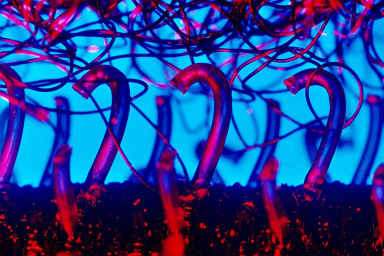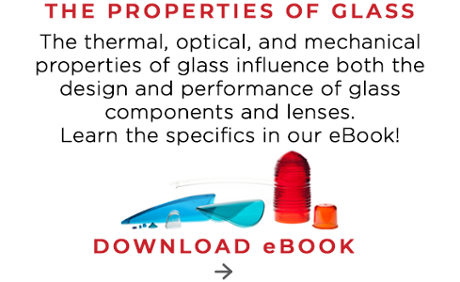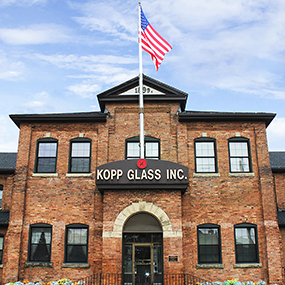Biomimetic research is leading to nanostructured surfaces that minimize reflections for more efficient photovoltaic and illumination systems.
When presented with complex challenges, scientists and engineers often look to the natural world for inspiration– asking “how does nature solve this problem?” Eons of evolutionary development have resulted in remarkable natural capabilities: frictionless motion through water, aerodynamic wings that reduce drag, skin that renders its wearer virtually invisible. The natural world is capable of things that we can only dream of – until now. Sophisticated research tools and technologies are turning these dreams into reality and giving researchers a better understanding of the mechanisms that enable these brilliant feats. Breakthroughs in nanofabrication are taking research from the lab and enabling the replication of natural forms.
This research approach, called biomimicry, is not new – engineers and designers have been creating products that borrow from nature for centuries. For example, Velcro was invented in 1941 when Swiss engineer Georges de Mestral walked through a field and noticed the ingenious – and frustrating – way burs stuck to his dog.

Since then, scientists and engineers continue to study nature in an effort to develop technologies that replicate their amazing capabilities to solve modern challenges.
This approach to problem solving is gaining traction in many fields of research and was noticeable at SPIE Optics and Photonics this past August. Many of the presentations shared biomimetic research that sought to minimize reflection and improve efficiency in photovoltaic and illumination systems. This is a critical concern to lighting manufacturers and it is exciting to see biomimetic solutions develop as new technologies and manufacturing processes attain capabilities on the nanoscale.
The Cost of Reflection and Nature’s Solution
In the battle between predator and prey, you either evolved superior offensive and defensive capabilities or you died. This arms race has led to a remarkable array of capabilities to prevent detection. In the nocturnal world, any hint of reflection is a signal to predators to swoop in and eat you. Moths have evolved many capabilities that allow them to move through the forest undetected. Particularly interesting is their eyes; the outer surface is covered with a hexagonal pattern of conical features that eliminate reflections, helping to hide them from predators.
In the lighting industry, reflection can cause problems that also have costly repercussions. Luminaire performance standards for light systems are not only high, they’re extremely competitive. Even small losses in the system’s efficiency can prevent regulatory compliance and market adoption. One of the most common causes of luminaire loss can be attributed to reflection. Reflection is caused by the change of the refractive index at the interface between two materials, such as when light passes through air and enters a piece of glass or vice versa. In lens applications, we attribute most luminaire loss to the reflection of light at the lens’ surfaces back towards the light source.
The two most common methods to reduce reflection are interference coatings and surface treatments that create a graded refractive index. Nature has developed many diverse surface textures that create a graded refractive index. New analytical tools and capabilities are giving scientists a better understanding of how these nanostructured surfaces reduce reflections. I’m going to highlight some of the presentations from SPIE Optics and Photonics that explore innovative methods researchers have developed to mimic these surfaces.
Texturing: Nanostructured Surfaces
We can replicate nature’s nanostructured surfaces by directly manipulating the surface or by applying films that consist of a periodic array of nanoscale features. Antireflective properties are exhibited when the feature size is smaller than the wavelength of light. As a consequence, the incoming light sees the surface as having a graded refractive index (or more easily thought of as the average between the two refractive indices) and therefore reflections are reduced.
The success of these surface features to reduce reflections is determined by the nanostructure’s height, shape, and spacing. Natural antireflective properties have evolved through different morphologies. While many may be familiar with the moths’ eye structure, researchers at the University of Namur in Belgium are drawing inspiration from other creatures. The presentation, “Natural case of multinational nanostructured surfaces: the wing of the grey cicada” reveals that the cicada’s wing is a multifunctional surface that exhibits both antireflective and hydrophobic properties. The antireflective properties are derived from domed, truncated cone shaped nanostructures that are arranged in a hexagonal lattice pattern. This arrangement and morphology is able to achieve almost 100% transmission of the entire visible spectrum.
Better Performance in Harsh Environments
Nanostructured surface textures often out-perform traditional coatings when it comes to withstanding harsh environments. Traditional AR coatings often face delamination, uniformity, or cracking issues when put to the test.
Resistance to degradation was demonstrated in the presentation, “Environmental tests of antireflective surface structures on windows for high energy laser applications.” Dr. Lynda Busse shared a new antireflective surface structure developed at the U.S. Naval Research Lab and the University of North Carolina. Based on the moths’ eye structure; they applied it directly onto fused silica windows for high-energy laser systems. These surface structures were etched within an inductively coupled plasma reactive ion etcher (ICP-RIE) to optimal heights of 400 to 500 nm that enabled them to achieve very low reflective losses. Environmental testing demonstrated the superiority of the moths’ eye structure to interference coatings when it comes to resisting damage from high laser energy densities and abrasion from rain, sand, and salt fog.
The ability of nanostructured surfaces to withstand harsh environments was demonstrated again in the presentation “Optically transparent, mechanically durable, nanostructured superhydrophobic / omniphobic / anti-fogging glass thin films.” Tolga Aytug and his team at the Oak Ridge National Library developed an innovative approach to create a multi-functional coating that exhibited antireflective, superhydrophilic, and superhydrophobic properties. Radio frequency magnetron sputtering was used to deposit a film onto a piece of glass. The film was then heat treated, causing phase separation. After the separation, they were able to selectively etch one of the phases and create a graded porosity with nanostructured forms that block ultraviolet radiation and exhibit broadband antireflective properties.
The most impressive aspect of Aytug’s method was the coating’s ability to withstand harsh environments. Even after intense sand abrasion testing, the nanostructures exhibited little wear with no observable cracking or delamination. Ultimately, the coating’s scratch resistance was comparable to the glass substrate.
Biomimetic Antireflective Surfaces for Greater Efficiency
The use of nanostructured surfaces to reduce reflective losses are being explored for both photovoltaic and illumination applications. In illumination applications, their benefits are most noticeable in stadium, roadway, and other lighting applications where light output is critical. Controlling reflective losses enable engineers to design systems that realize greater efficiency through fewer fixtures and reduced energy demands. The development of nanostructured antireflective surfaces and coatings for illumination applications will potentially enhance light extraction, increase light output, decrease power consumption, and ultimately improve efficiency.
This is an exciting field of research that has the potential to solve many of the reflection issues that shroud illumination systems that strive to reach optimal efficiency.
To learn more about the basics of glass, download our eBook:
Image credits:
Green lacewing photograph by USGS Bee Inventory and Monitoring Lab from Beltsville, Maryland, USA [CC-BY-2.0], via Wikimedia Commons
Hook fastener photograph by Natural Philo [CC-BY-SA-3.0], via Wikimedia Commons


